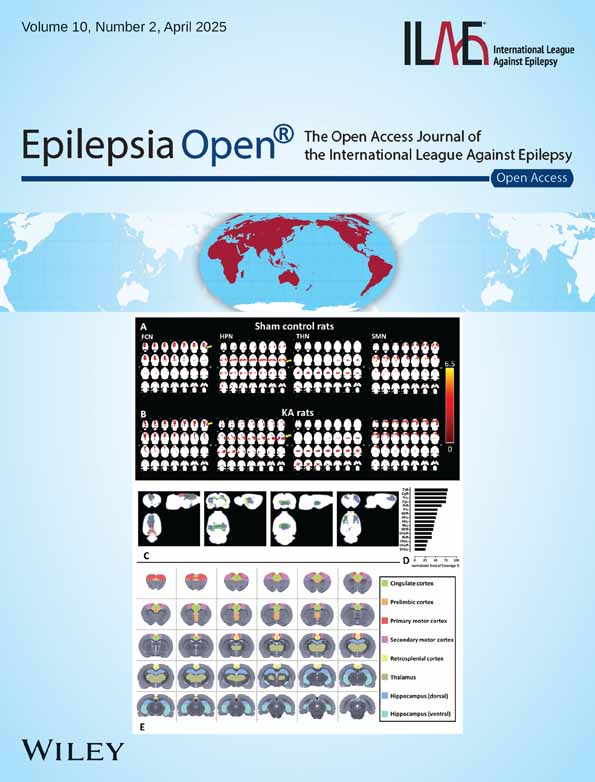Epilepsy following neonatal encephalopathy—Future directions
We appreciate the thoughtful review of our publication in the recent correspondence from Lucia Fusco.1, 2 Our study investigated the incidence of later epilepsy in full term infants with neonatal encephalopathy (NE) who underwent continuous conventional electroencephalography (cEEG) monitoring during the neonatal period. A secondary objective was to identify potential predictors of later epilepsy. While our sixteen-year study period provided valuable insights into long term outcomes, we acknowledge the inherent limitations of its retrospective design.
The main strength of our study is that all infants underwent cEEG monitoring during the neonatal period, which remains the gold standard for neonatal seizure detection.3
- Emphasis on electrographic neonatal seizures (ENS): We acknowledge that EEG background patterns can serve as important predictors of neurodevelopmental outcomes.4, 5 In our study, we did indeed find that a severely abnormal background EEG pattern was a predictor of later epilepsy. However, as we included multiple etiologies, we could not use a standardized background grading scheme and were limited to a binary grade of severely abnormal or not. In addition, the duration of EEG recordings varied, and we did not have a consistent time point at which all EEGs were graded (except for those with HIE). The true value of the background EEG as a predictor of later epilepsy should be established in a prospective cohort using a standardized grading scheme and at multiple time points. Hence, we focused on a robust EEG marker—clearly documented ENS—for this study. Given the retrospective nature of our study and the extended time frame, we did not have detailed MRI data for all infants. The correlation of background EEG patterns with specific cortical and subcortical injury patterns on MRI requires further investigation. While a multivariable analysis could have provided additional insights into multiple contributing factors, our sample size constrained this approach.6
- Lack of detailed etiological analysis: We acknowledge that a comprehensive etiological analysis was not feasible due to the retrospective nature of our study.
- Advancements in diagnostics and neuroimaging: Over the study period, significant advances have been made in both diagnostic techniques and neuroimaging. While detailed neuroimaging could provide deeper insights into the risk of later epilepsy, the retrospective nature of our investigation limited such an approach.
- Role of genetic investigations: Genetic testing has advanced considerably, with newer diagnostic methods emerging that were unavailable during the original studies. While it is possible that some cases of epilepsy previously attributed to HIE may have had an underlying genetic basis, we anticipate that this would be a small number.
- Neonatal seizure treatment and the NEST study: The treatment of neonatal seizures and long-term outcomes remains an area of active investigation. The NEST study relied on aEEG monitoring only for neonatal seizure detection, which necessitates cautious interpretation of the findings.7-9
Our study highlights the importance of cEEG monitoring in infants with NE and its potential role in predicting later epilepsy. Future research should focus on prospective studies in larger cohorts incorporating cEEG monitoring alongside advanced neuroimaging and extended genetic analysis.
FUNDING INFORMATION
CMS is a PhD candidate funded by the Health Research Board (CDA-2018-008) This research was also supported by a Wellcome Trust Innovator Award (209325/Z/17/Z) and partly supported by Merck's Life Science Community Engagement Programme—Scientific Research. No role was played by the funder/sponsor in the design and conduct of the study; collection, management, analysis, and interpretation of the data; preparation, review, or approval of the manuscript; and decision to submit the manuscript for publication.
CONFLICT OF INTEREST STATEMENT
None of the authors has any conflict of interest to disclose. We confirm that we have read the journal's position on issues involved in ethical publication and affirm that this report is consistent with those guidelines.
Open Research
DATA AVAILABILITY STATEMENT
Data sharing is not applicable to this article as no new data were created or analyzed in this study.




